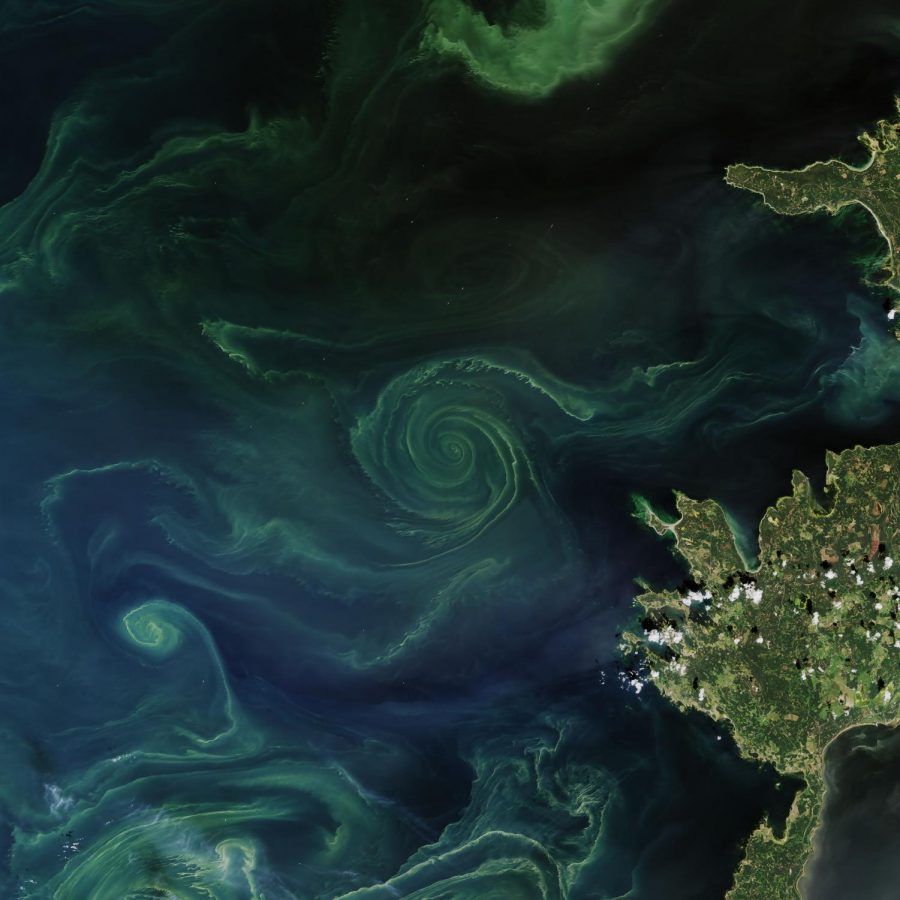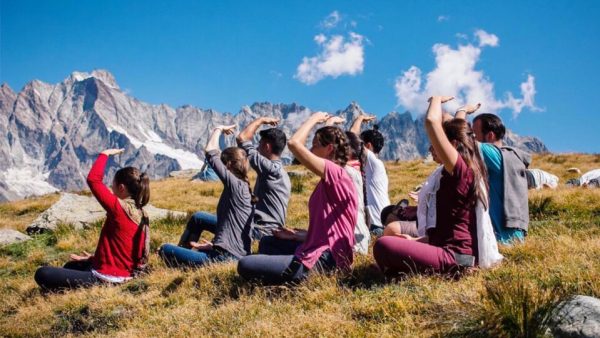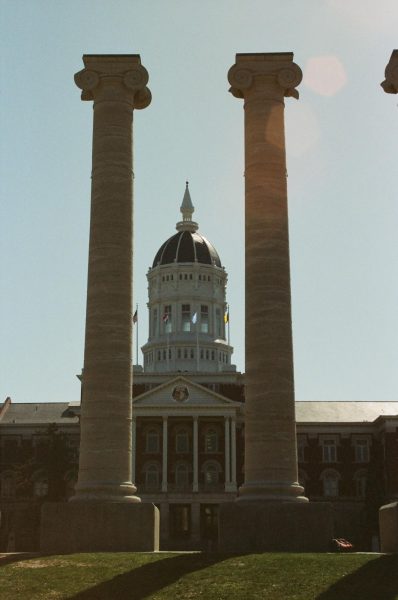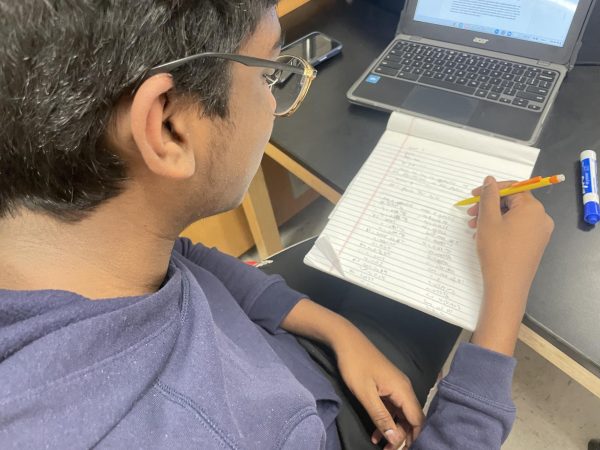HEATING UP: CLIMATE CHANGE
On July 18, 2018, the Operational Land Imager (OLI) on Landsat 8 acquired a natural-color image of a swirling green phytoplankton bloom in the Gulf of Finland, a section of the Baltic Sea. Note how the phytoplankton trace the edges of a vortex; it is possible that this ocean eddy is pumping up nutrients from the depths. Every summer, phytoplankton spread across the northern basins of the North Atlantic and Arctic Oceans, with blooms spanning hundreds and sometimes thousands of miles. Nutrient-rich, cooler waters tend to promote more growth among marine plants and phytoplankton than is found in tropical waters. Blooms in summer 2018 off Scandinavia seem to be particularly intense.
November 13, 2018
As Principal Tim McCarthy’s voice booms over the speaker system in the cafeteria, students left and right throw their recyclables in the compost bin, ignoring his pleading instructions. However minuscule this action might seem, it truly does contribute to polluting our earth.
During the past few years, global warming has been a rising concern in many people’s lives. Global warming is the gradual increase in temperature of the earth’s oceans, climates and atmosphere due to “greenhouse gases” which are the effect of excessive carbon dioxide and pollutants from burning coal and fossil fuels being released into the air. These changes can cause rising sea levels and an increase in the frequency and severity of storms.
Greenhouse gases are what is clogging and polluting our atmosphere.
According to a reference article from National Geographic, “It’s becoming clear that humans have caused most of the past century’s warming by releasing heat-trapping gases as we power our modern lives. Called greenhouse gases, their levels are higher now than in the last 650,000 years.”
This increase of greenhouse gases are what is causing a sharp incline in temperatures all around the world.
The ozone layer is what protects our Earth from harmful ultraviolet rays by absorbing them and prevents damage in the DNA of plants and animals which causes cancer. In the past few decades, scientists have realized that our natural protective barrier, the ozone layer, is deteriorating.
Specifically, an area of concern is the space over the South Pole, which they call an ozone hole. This hole is caused by excessive chlorofluorocarbon (CFC) gases which come from aerosol cans such as axe, Febreeze, etc. The ozone layer can only absorb so much chlorine before it starts thinning. However, after a few decades of observation and legislation against aerosol cans and the use of CFC gases in products,
“last year, the ozone hole was 4 million square kilometers (2,485,484.769 miles)smaller than it had been in the past,” according to National Geographic.
To give you some perspective, the surface area of the entire Earth is 196.9 million square miles. This makes the shrinkage of the ozone hole only about two percent of the total area of the Earth. However, over time, this two percent is leading us in the right direction to help save our planet. There’s no doubt that humans can have an impact on the environment, both positively and negatively which is shown by this drastic decrease in the ozone hole.
There are people who feel differently about this topic, as there are nuances in every political topic (yes, this topic does get political). Scientists mark the start of modern global record-keeping at roughly 137 years ago, in 1880.
“That’s because earlier available climate data doesn’t cover enough of the planet to get an accurate reading,” according to NASA.
The Earth is 4.5 billion years old and 137 of those years is just a microscopic sliver of the big picture. Some people believe that humans cannot impart a change in the cycles of the climate on our gigantic planet.
Due to the obscurity of what climate was like at the beginning of time, 4.5 billion years ago, some scientists can’t be sure what the future will look like.
National Geographic said, “The Earth’s climate has changed throughout history. Just in the last 650,000 years there have been seven cycles of glacial advance and retreat, with the abrupt end of the last ice age about 7,000 years ago marking the beginning of the modern climate era.”
Even though humans do have an impact on global warming, some might think that the impact is not that significant and won’t impact the “pattern” of heating and cooling in a broader aspect.
On the other hand, there are statistics that show that there is a direct correlation of human pollutant emissions to the warming of our climate as of late.
“Scientists are discovering that production of electricity using coal and petroleum, and other uses of fossil fuels in transportation and industry, affects our environment in ways we did not understand before,” National Geographic contributor, Aaron Sidder said.
This new information causes new discoveries and new challenges. Since we are aware of this direct correlation, people are trying to spread awareness about cutting back on electricity in order to preserve the earth.
Regardless, there are many ways you can help preserve our Earth. Trying to conserve water is a major part of saving the environment. Turning the water off while brushing your teeth, limiting the amount of time you’re in the shower, and fixing “leaky” toilets. These are all ways to do your part.
In addition, trying to carpool with others is a great way to reduce the amount of carbon emissions you are putting in the atmosphere. Also, riding bikes or walking from place to place is also an earth-friendly way of transportation and can get you moving and exercising.
A change in our lifestyles needs to be implemented, whether it’s to stop global warming or just live a more energy efficient way of life.












